CMS Updates IOP and PHP Payment Rates for 2025
The Centers for Medicare & Medicaid Services (CMS) today issued its calendar year (CY) 2025 Medicare hospital outpatient prospective payment system (OPPS) proposed rule, which proposes a net increase of 2.3 percentage points, relative to current year rates. The net update reflects a market basket increase of 3.0 percentage points and the statutorily required 0.4 percentage point cut, along with several budget neutrality adjustments and a minor increase in outlier payments.
The proposed update would apply to services paid under the OPPS, intensive outpatient programs (IOP), partial hospitalization programs (PHP), community mental health centers (CMHCs), opioid use disorder (OUD) treatments in an IOP, and other settings.
In addition to other items, the proposed rule addresses the behavioral healthcare provisions summarized below and lists in Table 68 the eight proposed ambulatory payment classification (APC) per diems for IOPs and PHPs that are set according to the number of services provided per day.
IOPs:
For the IOP benefit established last year, the current dual-rate, per-diem structure would be maintained: one rate for days with three services and another rate for days with four or more services. In general, the structure of the IOP mirrors the design of the PHP, including provisions on coding, billing, and payment policies.
The rule defines IOPs as distinct and organized outpatient programs of psychiatric services provided for individuals who have an acute mental illness or substance use disorder, consisting of a specified group of behavioral health services paid on a per-diem basis for a minimum of nine hours of IOP services per week, or other payment system.
Opioid Treatment Program (OTP) Payment Add-On:
For the new OPPS coverage of OUD treatments that OTPs provide, CMS would maintain the payment add-on of three times the payment rate for APC 5861 (intensive outpatient of three services per day) for hospital-based IOPs.
FQHCs and RHCs:
The annual payment update for IOP services provided by federally qualified health centers and rural health clinics will be addressed in the pending physician fee schedule proposed rule for CY 2025.
PHPs:
For PHPs, services provided in hospital outpatient departments and CMHCs, CMS proposes to maintain the current payment structure, which sets reimbursements based on whether a patient receives three services versus four or more services per day. PHPs are intensive, structured outpatient programs that are alternatives to psychiatric hospitalization, consisting of a specified group of mental health services paid on a per-diem basis for a minimum of 20 hours of PHP services per week, based on per diem costs.
Access to Non-Opioid Treatments for Pain Relief:
As mandated by Congress, CMS is proposing temporary add-on payments for certain non-opioid treatments for pain relief. This complex provision would take effect from Jan. 1, 2025 through Dec. 31, 2027, and would require certain clinical evidence for medical devices and FDA-approved indications for pain management. The payment add-on would be capped at the estimated average of 18% of the full OPPS payment, calculated using the top five procedures by volume for each drug or device. Table 84 in the rule lists the proposed seven injections and other items that would qualify for a payment add-on under this provision.
CMS will accept comments on this rule through Sept 9. See the agency’s related fact sheet for more information.

